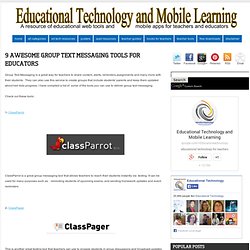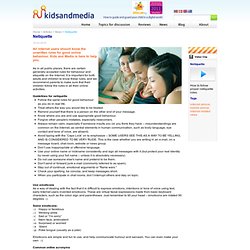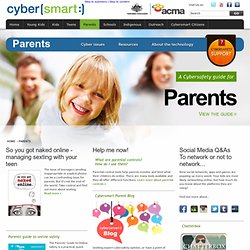

11 Underlying Assumptions Of Digital Literacy. 11 Underlying Assumptions Of Digital Literacy In understanding the shift from literacy to digital literacy–or rather to understand them both in their own native contexts–it may help to take a look at the underlying assumptions of digital literacy.

This means looking at what’s changing, why it’s changing, and what that means for education. 1. Schools should teach the content that matter most. Put another way: We should promote the cognitive growth of the kinds of “things” that help people make their lives better. 2. Put another way: Reading and writing are common and critical. 3. Put another way: Literacy isn’t any one thing, but rather represents a person’s ability and tendency to communicate and be communicated to. 4.
Put another way: Through practice, media users will, for better or for worse, “get better” at communicating through technology. 5. Put another way: Literacy is crazy important. 6. 7. Put another way: Abundance changes everything. 8. 9 Awesome Group Text Messaging Tools for Educators. Group Text Messaging is a great way for teachers to share content, alerts, reminders,assignments and many more with their students.

They can also use this service to create groups that include students' parents and keep them updated about heir kids progress. I have compiled a list of some of the tools you can use to deliver group text messaging. How Can we Embed Digital Literacy in the Classroom? - Purposeful Technology-Constructing Meaning in 21st Century Schools. For easy reference, here are technology related standards by grade level.

Please see the link above to view/reference both the literacy and mathematics Common Core Standards in their entirety on the CCCS's website.College and Career Readiness Anchor Standards for Reading (K-5):Integration of Knowledge and Ideas: 7. Integrate and evaluate content presented in diverse media and formats, including visually and quantitatively, as well as in words.
5 Ways You Should Integrate Digital Citizenship Into Your Classes. Recently, I was told by a teacher that she doesn’t have time to teach digital citizenship because she has to cover too many other content-specific standards.

I get it... the Common Core-state tests-AP/IB/SAT/ACT madness eats up so much of our time. Still, there is no excuse for allowing students to enter into the digital world without a toolkit for not only safety but also success. Beyond that, there is such a wide range of options for truly integrating digital citizenship objectives that the argument given by teachers who claim a lack of time is simply unfounded. Here are a few ways we all can bring digital citizenship to our classrooms seamlessly. Digital Teaching Tip 1: Use an LMS Edmodo and Schoology are free learning management systems which provide teachers with platforms for discussions, resource sharing, grading, messaging and networking. Helping students develop their technology in the classroom Internet search... How to Use Internet – How to Use Mac – How to use PC. As in all public places, there are certain generally accepted rules for behaviour and etiquette on the Internet.

7 Rules to Teach Kids Online Etiquette. Netiquette for Kids. Teaching Netiquette to Kids. What is the “right” age for youngsters to begin texting and using social media?

As the Mom of two elementary school-aged daughters and an educator on girl bullying, I field this question from parents all of the time. Truly, there is great debate on the subject among professionals, along with a whole lot of hand-wringing by parents. As adults, we are all-too-aware of dangers online--both from anonymous predators and familiar “frenemies” who use the internet as a weapon. Cybersafety advice and Help for Parents. So you got naked online - managing sexting with your teen The issue of teenagers sending inappropriate or explicit photos can be a confronting issue for parents.

But it’s not the end of the world. Take control and find out more about sexting.Read more » Parents' guide to online safety The Parents’ Guide to Online Safety is a practical, quick reference guide to a number of common cybersafety issues and how to manage them.Read more » Netiquette. Sometimes it’s easy to forget that there is a real person on the other end of your IM, game or wall post.

It’s easier to say and do things online that you might not do in ‘real life’. This may hurt that person’s feelings or make them feel unsafe or embarrassed. It’s important to treat people online the same way that you would face to face. Kids – Netiquette for Kids. Netiquette. We expect other drivers to observe the rules of the road.

The same is true as we travel through cyberspace. That's where netiquette, a term allegedly coined from either network etiquette or Internet etiquette comes in handy. To guide you through your online communications, keep these pointers in mind: 1.Avoid writing e-mail or posting messages in blogs, newsgroups, forums, chat rooms and other online venues using all capital letters. IT LOOKS LIKE YOU'RE SHOUTING! ConnectED - Grade 4 - Netiquette. Netiquette: an exercise and e-guides on social interaction and communicating electronically. The online learning series E-guides on social interaction and communicating electronically Within the email message, mouse over red text to find the commandments of good email netiquette.Look for all ten!

Communicating clearly on the Internet without creating misunderstandings is a challenge.One problem is that you haven't any facial expressions, body language, or environment to help you express yourself; another that there is little "give and take" for developing what you mean to say or are discussing These guidelines hopefully will help you: Online learning/communicating:
Centre for Teaching, Learning and Technology. Netiquette is all about the code of behavior established for communicating online. The rules for netiquette will vary, depending on the context (formal/informal); the people (known/unknown to each other) and the activity. A couple of questions will help set the context for the “rules” to follow. Why do we want to communicate online? Basically, online interaction (in the context of a course) is there to encourage: Social interactionRelationship/community buildingA certain amount of trust between participants. A Service of Albion.com. Shared%2FDocuments%2FInfoSheets%2FNetiquette. Netiquette. Betty's Netiquette Quiz - The Carnegie Cyber Academy - An Online Safety site and Games for Kids. Netiquette.